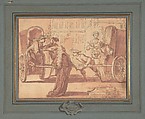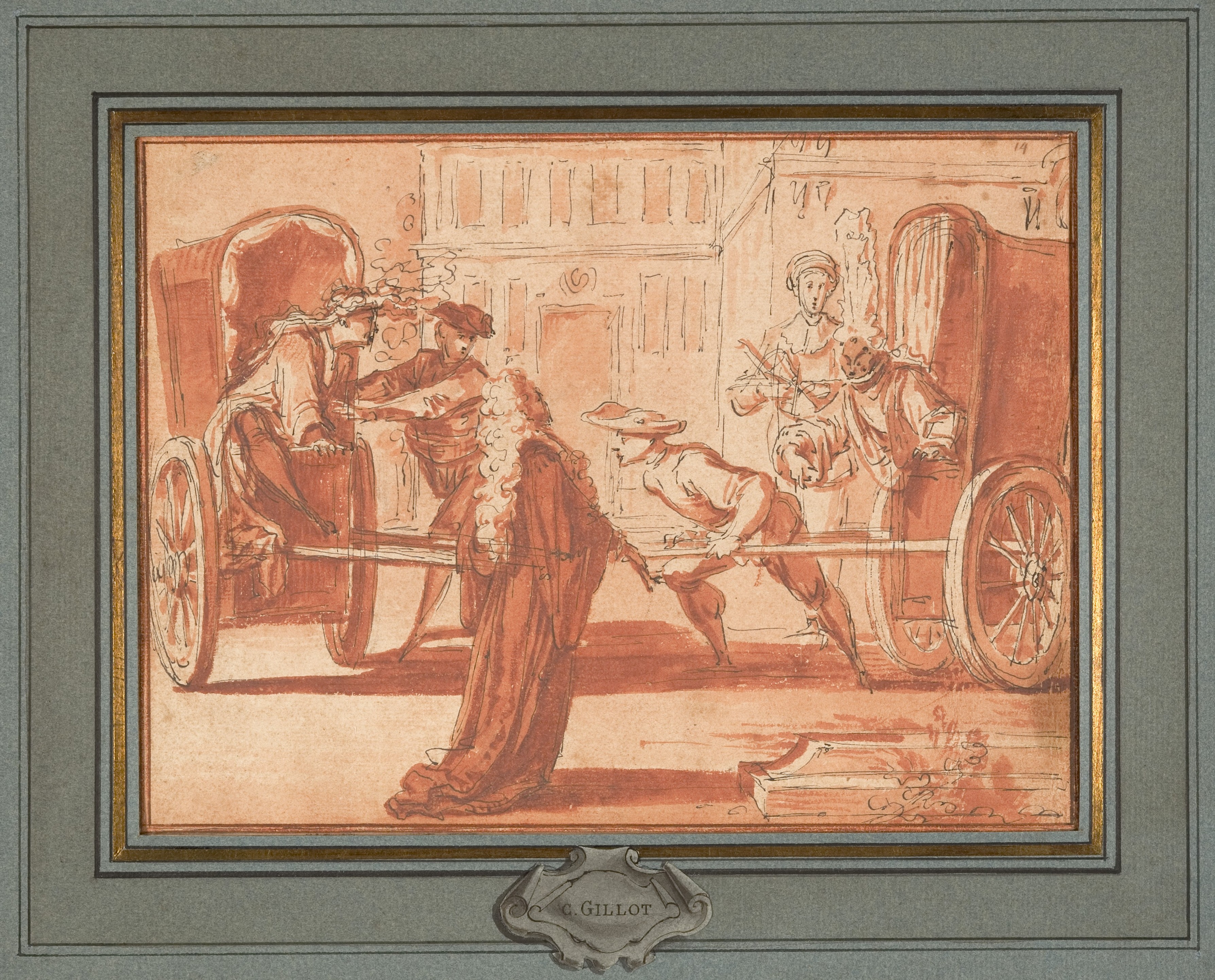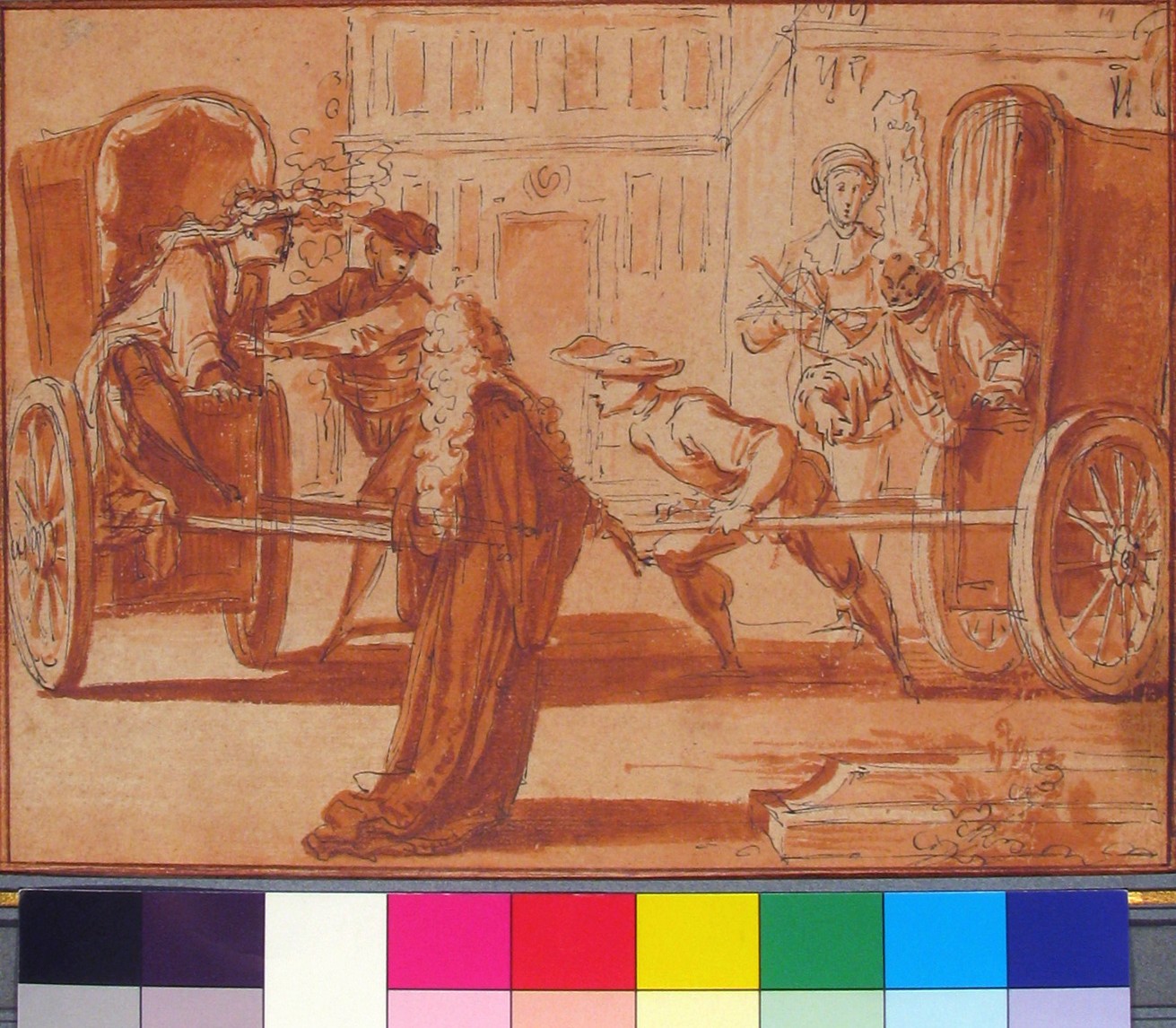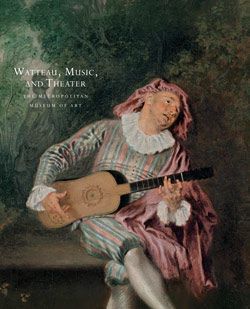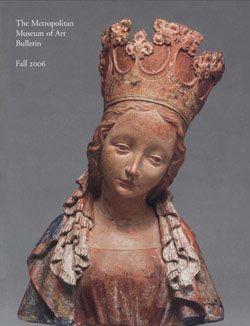La scène des deux carrosses
Claude Gillot French
Not on view
Primarily a graphic artist, Claude Gillot specialized in scenes of satire and whimsy, often using theatrical figures or satyrs as protagonists. Typically, his characters embody both the base human instincts that lend the scenes their humor and the elegant, dancelike comportment that situates them in the realm of witty Rococo divertissements. Gillot's ideas were transmitted to his most famous student, Antoine Watteau, whose fêtes galantes brought the fantasy and theatrical inspiration of Gillot's work into the mainstream of French art.
The irreverence of the commedia dell'arte provided many of Gillot's most memorable subjects. This drawing relates to his best-known painting, Les deux carrosses (Musée du Louvre, Paris). It was directly inspired by a short sketch appended to a three-act comedy, Foire Saint Germain, which was first performed in 1695. An altercation breaks out between two cabmen and their passengers (commedia dell'arte characters Arlequin and Scaramouche, both dressed in women's clothing) when the carriages meet in a narrow alley and each refuses to back up and let the other pass. The sketch concludes when a passing judge attempts to mediate the conflict but instead becomes the focus of the collective ire and is chased offstage.
This image cannot be enlarged, viewed at full screen, or downloaded.
This artwork is meant to be viewed from right to left. Scroll left to view more.
